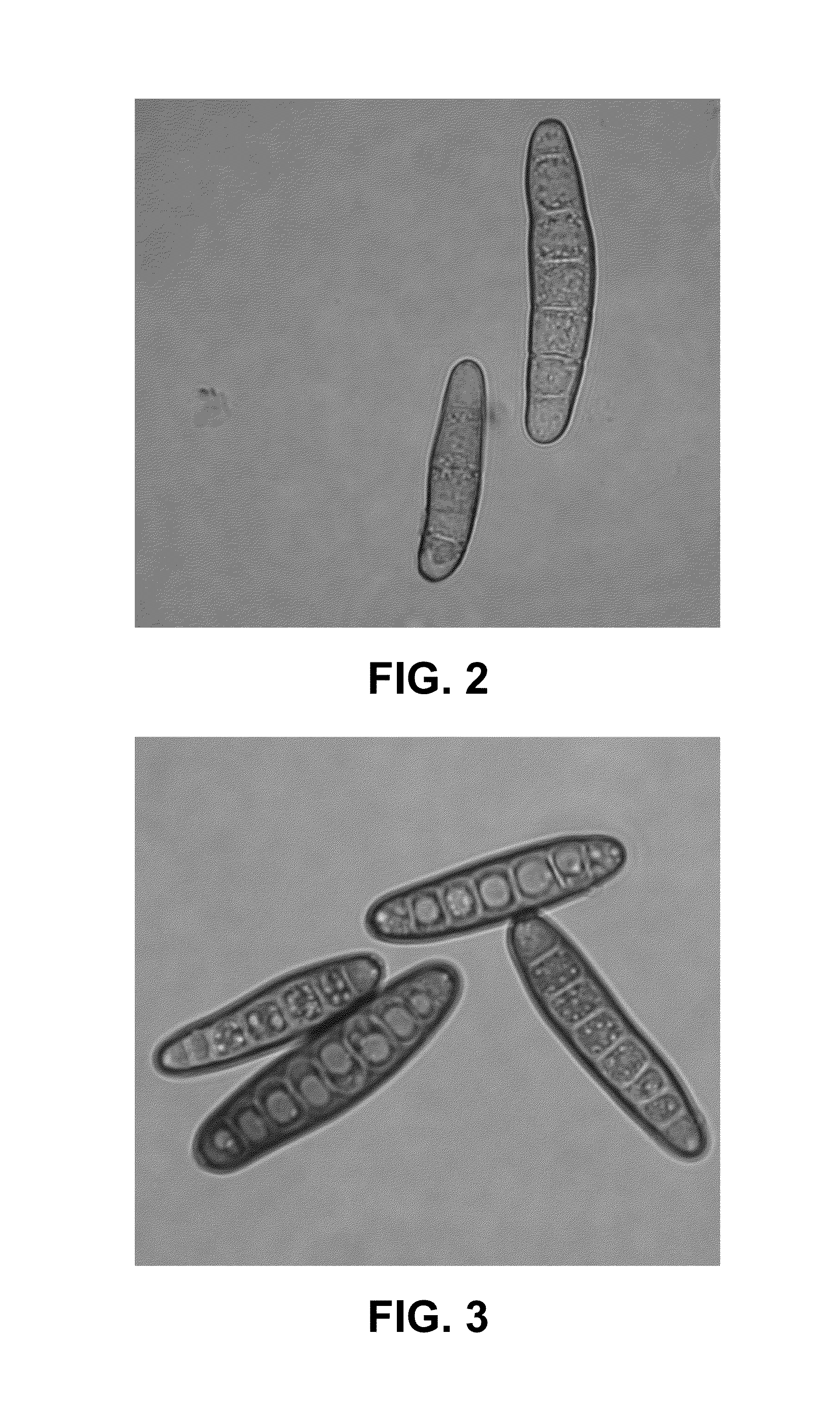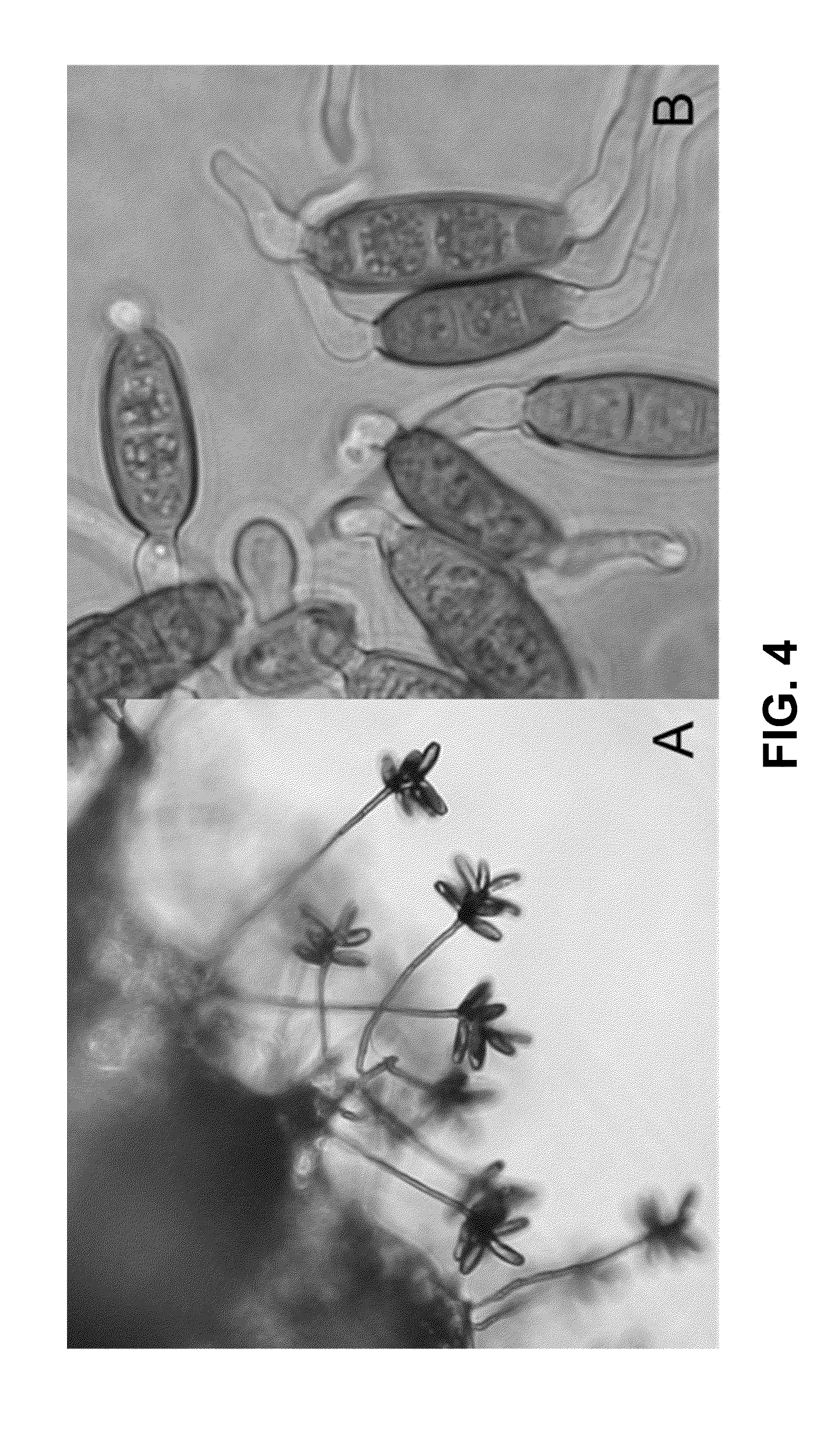Antimicrobial and Anti-inflammatory activity of switchgrass-derived extractives
a technology of anti-inflammatory activity and switchgrass, which is applied in the direction of biocide, plant/algae/fungi/lichens ingredients, fuels, etc., can solve the problems of difficult identification of alternaria /i>species, increased disease pressure, and limited research done on plant pathogens
- Summary
- Abstract
- Description
- Claims
- Application Information
AI Technical Summary
Benefits of technology
Problems solved by technology
Method used
Image
Examples
Embodiment Construction
[0034]The specific objectives of this study were: 1) to identify fungal pathogens that occur naturally on seedlings and mature switchgrass plants grown in Tennessee; 2) to identify seedborne pathogens of switchgrass; 3) to determine the antimicrobial potential of switchgrass extractives.
[0035]Switchgrass (Panicum virgatum L.) is a perennial warm-season (C4) prairie grass that is native to many regions of the United States. Switchgrass is being investigated as a lignocellulose feedstock crop due to its wide adaptability and perennial growth characteristics, but the process of breaking down switchgrass plant material to fermentable sugars is still being optimized. Several systems have been developed that use mechanical / chemical disruption to breakdown complex sugars to simpler sugars through a pretreatment step prior to saccharification and fermentation (Tao et al. 2011). Saccharification and fermentation employ a battery of microorganisms for sugar breakdown and conversion (Keshwani ...
PUM
| Property | Measurement | Unit |
|---|---|---|
| height | aaaaa | aaaaa |
| longitude | aaaaa | aaaaa |
| latitude | aaaaa | aaaaa |
Abstract
Description
Claims
Application Information
 Login to View More
Login to View More - R&D
- Intellectual Property
- Life Sciences
- Materials
- Tech Scout
- Unparalleled Data Quality
- Higher Quality Content
- 60% Fewer Hallucinations
Browse by: Latest US Patents, China's latest patents, Technical Efficacy Thesaurus, Application Domain, Technology Topic, Popular Technical Reports.
© 2025 PatSnap. All rights reserved.Legal|Privacy policy|Modern Slavery Act Transparency Statement|Sitemap|About US| Contact US: help@patsnap.com



